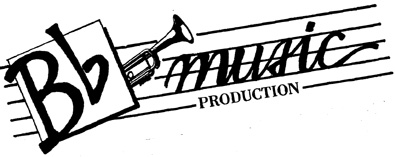 Study No. 1 Realaudio clip
Study No. 1 Realaudio clip
(Publ. Carl Fischer)
Special bundled price - Bundle - Book and 35 min. CD =$25.95


H. L. CLARKE
Technical Studies
 Study No. 1 Realaudio clip
Study No. 1 Realaudio clip
(Publ. Carl Fischer)
Special bundled price - Bundle - Book and 35 min. CD =$25.95



Toll Free: 866-711-6408
The First Study (and the rest for that matter) are only secondarily about mastering fingering complexities. THEY ARE ABOUT: (1) low,low mouthpiece pressure, (2) pressurizing and "leaning" on the air when ascending, while playing ppp, and (4) SMOOTHLY adjusting your focus for each and every tone as it goes whizzing by.
After you are feeling good about the First exercise,(a smoothly,rolling, bumblebee) WITHOUT stopping or breathing, connect exercise #1 to exercise #13 via a one-octave, ascending, chromatic scale up to the 1st space F#, where you continue the exercise as written (# 13). When you can accomplish the above while totally relaxed (with NO increase in mouthpiece pressure, you should then use another one-octave, ascending, chromatic scale, moving up to the 5th line F# - then continue with exercise #25 for as many repetitions as desired (able) THEN reverse the process (back through ex. #13, back through, and coming to rest upon the F# below the staff, where it all began! And yes, it is possible to extend the exercise through to #25 8VA, without pausing. But, the impossible always takes a little longer. You CAN do it - if you decide you want it.
Several people have asked for info. re. the "silent whistle", especially as it relates to the Technical Studies. Here's the objective. EVERY note we play has a best setting to insure:accuracy of pitch, purity of tone, and great resonance. Try this experiment: whistle: Middle C (Tu)- G(second line)(tah) - C2(third space)(ta) - E(4th space)(tee). Notice the movement of the tongue in order to assure an accurate, resonant tone. So often we read "play every note with the same lip setting"...this is nonsense. No two notes are best played with the same lip setting, let alone many or all. By silent whistle, I mean for you to follow the moving, melodic line so that the tongue and embouchure are placed in the best possible position, or focus, to best produce the tone in question.
Playing the trumpet accurately and with good resonance (beautiful tone) is contingent upon learning to accurately and efficiently move your "chops" to the correct focus for each individual tone! I call this the "dynamic constant-adjustment embouchure" as opposed to the "static embouchure", where the partials are selected using the forearms to vary the mouthpiece pressure.
Beautiful brass playing is all about the ability to maneuver the
embouchure. Flexibilty is the key to brilliant brass playing!
These exerces are designed to reinforce and compliment the principles of SAIL THE SEVEN C'S.
Thanks for listening!
Clyde E. Hunt